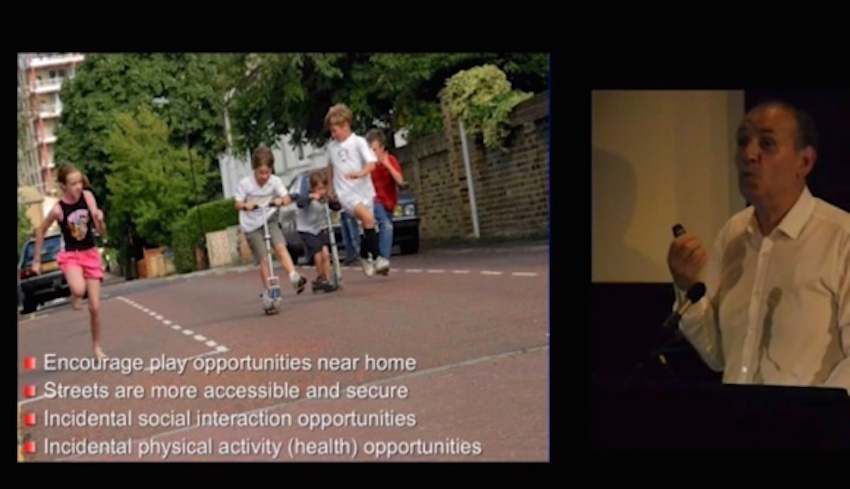Lamine Mahdjoubi, Faculty of the Built Environment at the University of the West of England challenged the audience: “A lot of people say that a livable city is one that is livable for children. But as I am going to show, in cities around the world, children are disappearing from our urban environment. I will share with you some of the work we have been doing in looking at the link between child play, health and the built environment.
The Good Child Enquiry by the Children Society asked thousands of children throughout the UK
“What is your definition of a good life?” The first thing is friendship. Socializing is a very powerful measure of a “good life” for children. The second important thing is play. Play is a powerful catalyst for children to socialize, exercise, etc.”
The study also showed that children have fewer friends than before, said Lamine, so there are fewer opportunities for them to socialize. They are spending less time playing out of doors, and more time sitting indoors. Nearly twenty percent of children play outside less than one hour per week.
From our partners:
“Children used to play close to home on the street, so the rise of the car has had the biggest impact on children’s play. And we seem to have become obsessed with the idea that children have to play in ghettoized playgrounds. But our work at the University of the West of England has found that children find playgrounds boring.” Lamine examines the recent changes in patterns of child play nationally, where economic resources are going, and the various barriers to children’s play, including parental attitudes. He then presents his research that compares play in formal playgrounds, with informal play in the street.
He concludes that we have to find a way to make our streets safer and more attractive for children, to entice them back to the street, because this is where children’s health can benefit most from extensive physical activity, and where children can experience the most rewarding social interaction with their friends.
This feature originally appeared in Livable Cities.
















